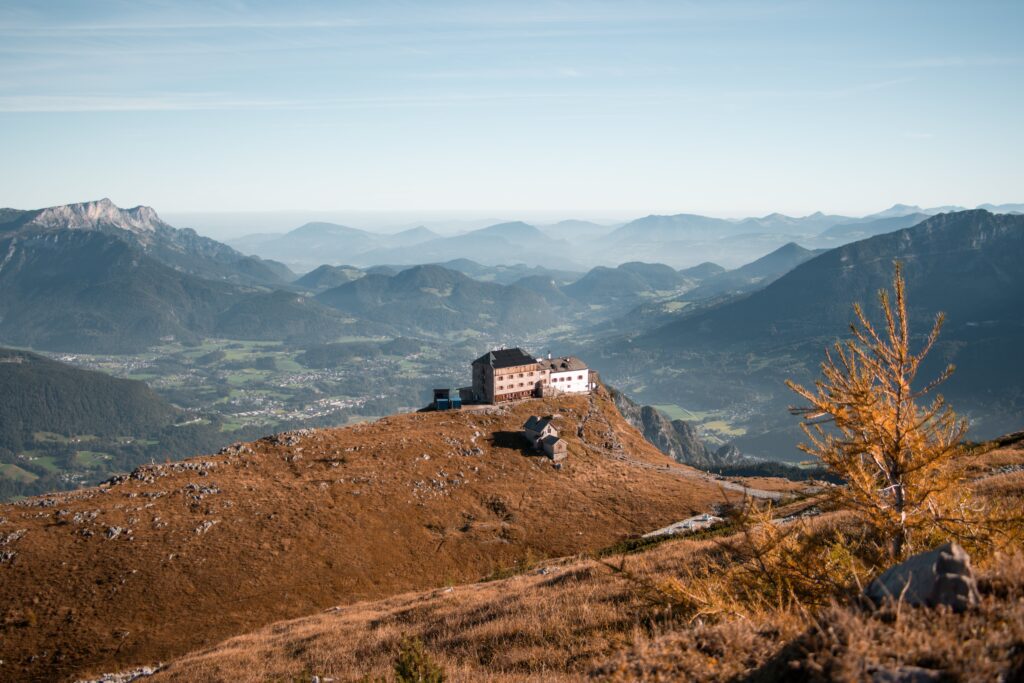You may be surprised to learn that Maryland, a state known for its coastal areas and historical landmarks, is home to some stunning mountains. While not as towering as those found in the Rocky Mountains, Maryland is blessed with the majestic beauty of the Appalachian Mountains. These rolling hills and picturesque peaks offer outdoor enthusiasts breathtaking views and endless opportunities for hiking, camping, and exploring. Whether you’re a nature lover or simply seeking a new adventure, Maryland’s mountains are waiting to be discovered. Yes, Maryland does have mountains! While it may not be the first state that comes to mind when thinking of mountainous regions, Maryland is home to several beautiful mountain ranges and unique geological features. In this comprehensive article, we will explore the geography of Maryland and delve into the various mountainous regions that can be found within the state.

Overview of Maryland’s Geography
Location and Size
Maryland is located in the Mid-Atlantic region of the United States. It is bordered by the states of Pennsylvania to the north, Delaware and the Atlantic Ocean to the east, Virginia to the south, and West Virginia and Washington, D.C. to the west. With a total area of approximately 12,407 square miles, Maryland is relatively small compared to its neighboring states. Despite its size, the diversity of its geography is quite impressive.
Physical Features
Maryland’s geography is characterized by a variety of physical features, ranging from the Appalachian Mountains in the west to the Chesapeake Bay in the east. The state can be divided into three main regions: the Western Maryland Plateau, the Piedmont Plateau, and the Coastal Plain. Each of these regions offers its own unique landscape and natural attractions.
Mountainous Regions in Maryland
Allegheny Mountains
The Allegheny Mountains are a prominent mountain range that extends through Western Maryland. This range is a part of the larger Appalachian Mountains and is known for its rugged beauty and diverse flora and fauna. The Allegheny Mountains are home to several state parks, including the popular Deep Creek Lake State Park, which offers opportunities for hiking, camping, and water-based activities.
Catoctin Mountain
Located in north-central Maryland, Catoctin Mountain is a small range that provides a stunning backdrop to the surrounding landscape. This mountain range is situated within Catoctin Mountain Park, a popular destination for outdoor enthusiasts. The park offers numerous hiking trails, scenic overlooks, and picnic areas, allowing visitors to fully immerse themselves in the natural beauty of the area.
Sideling Hill
Sideling Hill, located in Washington County, Maryland, is not a traditional mountain range, but rather an impressive geological formation. It is a prominent ridge that cuts through the landscape, showcasing layers of rock deposits dating back millions of years. Sideling Hill Overlook on Interstate 68 provides a unique vantage point to observe this natural wonder.
South Mountain
South Mountain is another notable mountain range situated in the central part of Maryland. It stretches from the Pennsylvania border down to the Potomac River, offering awe-inspiring views and abundant recreational opportunities. The Appalachian Trail traverses South Mountain, attracting hikers from near and far. The range is also home to several state and national parks, providing opportunities for camping, picnicking, and wildlife observation.
Wicomico Ridge
Wicomico Ridge is located on Maryland’s Eastern Shore, extending along the eastern shores of the Chesapeake Bay. This long, narrow ridge is characterized by gently rolling hills and fertile farmland. The area is known for its agriculture, particularly the production of corn, soybeans, and poultry. Wicomico Ridge offers a picturesque landscape that showcases the unique beauty of Maryland’s Eastern Shore.
Allegheny Mountains
Location and Description
The Allegheny Mountains are situated in the westernmost part of Maryland, forming the border between the state and West Virginia. This mountain range is a part of the larger Appalachian Mountains that span across eastern North America. The Allegheny Mountains boast stunning valleys, dense forests, and picturesque waterfalls, making it a haven for nature lovers.
Peaks and Highest Point
The Allegheny Mountains in Maryland are home to several notable peaks, including Backbone Mountain, Hoye-Crest, and Dan’s Mountain. Backbone Mountain is the highest peak in Maryland, reaching an elevation of 3,360 feet above sea level. Hoye-Crest, located within Garrett State Forest, is the highest point in the state, offering panoramic views of the surrounding landscape.
Catoctin Mountain
Location and Description
Catoctin Mountain is nestled in north-central Maryland, close to the border with Pennsylvania. This small mountain range covers an area of approximately 8,000 acres and is part of the larger Blue Ridge Mountains. Catoctin Mountain is characterized by rocky ridges, dense forests, and scenic streams, creating a tranquil and picturesque environment.
Significance
Catoctin Mountain holds cultural and historical significance, as it is home to Camp David, the presidential retreat for the United States. The mountain range also features the popular Cunningham Falls State Park, known for its stunning waterfall and hiking trails. Visitors to Catoctin Mountain can enjoy a wide range of outdoor activities, including camping, fishing, picnicking, and wildlife viewing.

Sideling Hill
Location and Description
Sideling Hill is a prominent geological formation that can be found in Washington County, Maryland. This ridge is situated along Interstate 68, providing travelers with a unique opportunity to witness the geologic history of the region. Sideling Hill is famous for its exposed rock layers, which showcase a diverse array of sedimentary deposits dating back millions of years.
Formation
The formation of Sideling Hill can be attributed to the gradual deposition of sedimentary rock layers over an extended period of time. The ridge was formed as a result of the tectonic forces that shaped the Appalachian Mountains. Over time, erosion and other natural processes exposed the layers of rock, creating the distinctive ridge that we see today.
South Mountain
Location and Description
South Mountain stretches across the central part of Maryland, extending from the Pennsylvania border to the Potomac River. This mountain range is a part of the larger Blue Ridge Mountains and offers breathtaking views of the surrounding countryside. South Mountain is characterized by rolling hills, dense forests, and stunning overlooks, making it a popular destination for outdoor enthusiasts.
Recreational Opportunities
South Mountain is home to several state and national parks, providing ample opportunities for outdoor recreation. Gathland State Park and South Mountain State Park offer a range of activities, including hiking, camping, picnicking, and fishing. Meanwhile, the Appalachian Trail, which passes through South Mountain, attracts hikers from all over the world, allowing them to experience the beauty of Maryland’s natural landscapes.

Wicomico Ridge
Location and Description
Wicomico Ridge is located on Maryland’s Eastern Shore, running parallel to the eastern shorelines of the Chesapeake Bay. This elongated ridge spans several counties and is characterized by gently rolling hills and fertile farmland. The area surrounding Wicomico Ridge is known for its agriculture, with numerous farms dotting the landscape.
Formation
Wicomico Ridge was formed as a result of the deposition of sedimentary materials during the Pleistocene Epoch. The ridge was shaped by glacial processes, as large ice sheets advanced and retreated across the region. Over time, the meltwater from the glaciers deposited sediments, giving rise to the ridge’s distinctive landscape.
Other Notable Landforms in Maryland
Piedmont Plateau
The Piedmont Plateau is a transitional region located between the Appalachian Mountains and the Coastal Plain. It is characterized by rolling hills, fertile farmland, and dense forests. The Piedmont Plateau offers a mix of natural beauty and urban development, with several cities and towns scattered throughout the region.
Chesapeake Bay
One of the most notable geographical features of Maryland is the Chesapeake Bay. This expansive estuary stretches over 200 miles, dividing the state into eastern and western regions. The Chesapeake Bay is not only a scenic wonder, but it also plays a vital role in the state’s ecology and economy. It serves as a habitat for numerous plant and animal species and supports various industries, such as fishing and tourism.
Coastal Plain
The Coastal Plain is a low-lying region that borders the Chesapeake Bay and the Atlantic Ocean. It is characterized by sandy beaches, marshes, and coastal forests. This region is a popular destination for beachgoers and offers opportunities for water-based activities, such as boating, fishing, and crabbing.
Atlantic Coastal Plain
The Atlantic Coastal Plain extends along the eastern shores of Maryland and encompasses the barrier islands and marshes of Assateague Island. This unique coastal environment is home to diverse wildlife and offers visitors a chance to explore pristine beaches, witness wild horses, and experience the unspoiled beauty of Maryland’s coastline.
Impact of Maryland’s Geography
Tourism and Outdoor Activities
Maryland’s diverse geography has a significant impact on tourism and outdoor activities within the state. The mountainous regions, such as the Allegheny Mountains and South Mountain, attract outdoor enthusiasts who enjoy hiking, camping, fishing, and wildlife observation. The Chesapeake Bay and Coastal Plain offer opportunities for water-based activities, including boating, kayaking, and beachcombing. Together, these natural attractions contribute to Maryland’s thriving tourism industry.
Ecological Importance
Maryland’s varied geography supports a rich and diverse ecosystem, providing habitats for a wide range of plant and animal species. The mountains, forests, wetlands, and coastal areas all contribute to the state’s ecological health. The Chesapeake Bay, in particular, is a vital ecosystem that supports countless species of fish, birds, and other marine life. Protecting and preserving Maryland’s natural landscapes is crucial for maintaining these important ecosystems.
Natural Resources
Maryland’s geography also plays a role in the state’s natural resource industry. The mountains provide a source of timber, while the coastal areas support commercial fishing and shellfish harvesting. Additionally, the Coastal Plain contains valuable deposits of sand and gravel, which are used in construction and road-building projects. The careful management of these natural resources is essential to sustainably utilize and protect Maryland’s environment.
Conclusion
In conclusion, Maryland’s geography is incredibly diverse, offering a wide range of natural attractions and recreational opportunities. From the Allegheny Mountains in the west to the Chesapeake Bay in the east, the state showcases the beauty of mountains, valleys, rivers, and coastlines. Whether you’re an outdoor enthusiast seeking adventure or a nature lover looking to immerse yourself in Maryland’s natural wonders, there is something for everyone to enjoy. So take some time to explore the mountains, hike the trails, and appreciate the unique geological formations that make Maryland a truly special place to visit.

